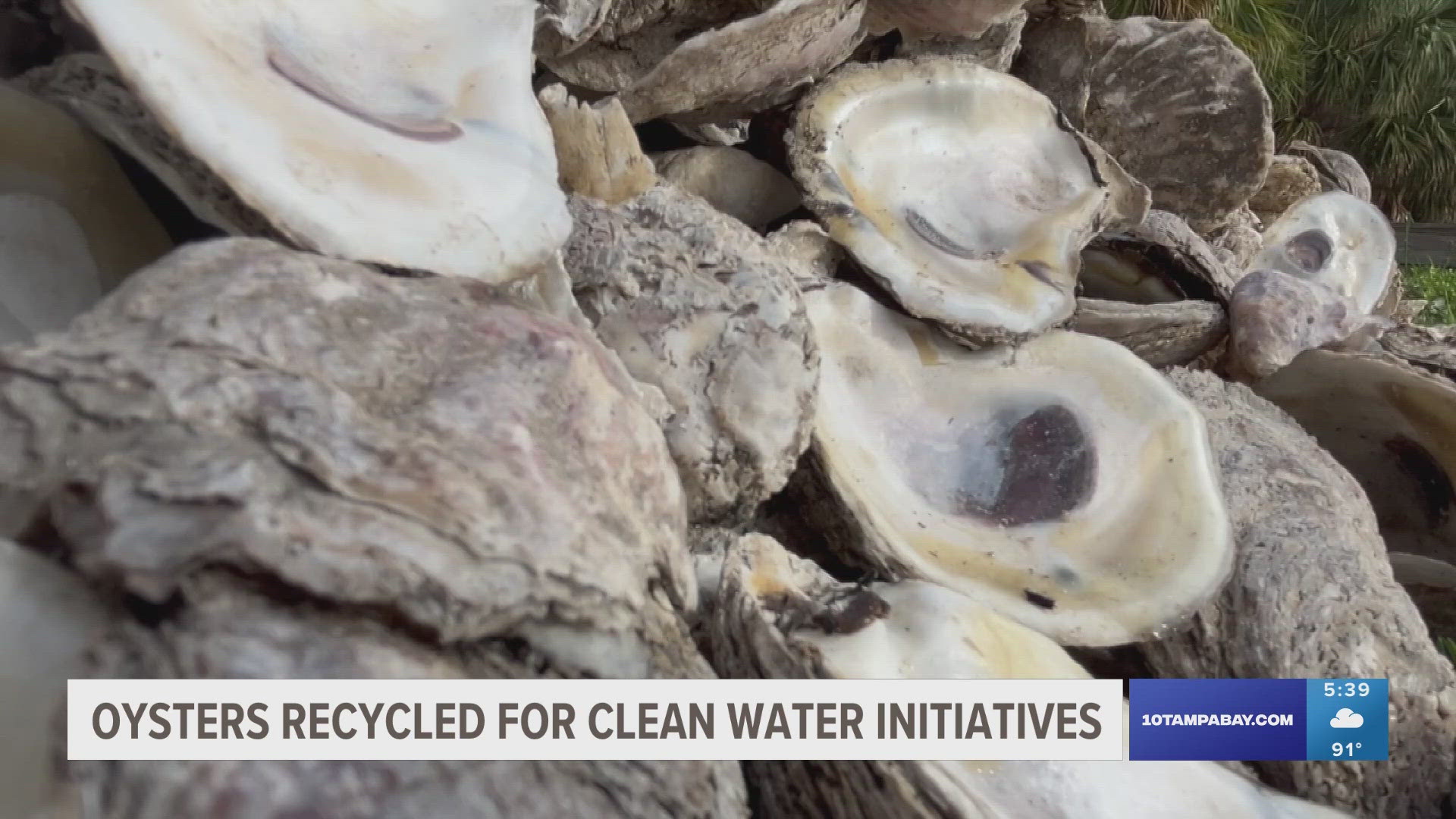PINELLAS COUNTY, Fla. — At The Tides restaurant in Safety Harbor, customers often open wide for oysters: “Yeah, they’re just tasty!” said Luceli Castanon, sitting at a corner table with two friends.
“Oh my gosh, they’ so good for you,” Amy Solak said. “They have all the zinc and iron that you need. They’re delicious.”
But after the slippery slurping is over, what happens to the shells? Where do they go?
“The trash,” Castanon ventures.
Well, in most cases that’s a “yes.”
However, in the Tampa Bay area, some shells go on a big journey back to the water, that actually benefits us all.
This oyster odyssey starts with the environmental group Tampa Bay Watch and staff members like Reagan Fennessy. I hopped in a pickup truck with her to learn more about the group’s Shells for Shorelines project.
“So, we do three weekly runs,” Fennessy said. Staff and volunteers trek to fourteen area restaurants to pick up buckets of oyster shells. Some restaurants might have a couple of the five-gallon buckets sitting out back, others might have as many as twenty-five.
From there, Fennessy takes the shells to a curing pad near Fort DeSoto. he tosses bucket contents onto some large heaps of shells. That’s where they’ll stay for three to six months, while critters and our hot Florida sun get rid of any bacteria or disease.
“Eventually what you’re left with is this nice, white, clean shell that’s ready to be put back into the environment,” explains Fennessy, while comparing a mucky new shell, to one that’s been there for months.
At the Tampa Bay Watch building on Tierre Verde, volunteers drill holes in the shells and string them onto ropes. They create what’s called a Vertical Oyster Garden, or VOG.
While VOGs hang from a dock, oyster larvae drifting through the water attach to the shells and begin to grow. That’s important because just one adult oyster can filter 50 gallons of water a day. More oysters equal more clean water.
“They’re kind of the MVP of water filtering,” Fennessy said.
Tampa Bay Watch encourages people with waterfront homes to become VOG gardeners. “It’s the easiest houseplant ever,” Fennessy said. “It waters itself, it feeds itself, it grows itself and you just get to watch the benefits.”
Jay Thomas has a home on the Intracoastal Waterway.
“This is better than paradise,” he says walking on his dock. And because Thomas wants to help keep his watery paradise clean, he’s an avid VOG gardener with six hanging below his dock.
“It’s really interesting to see how much life and things go on in here,” he says, pointing to live oysters on a VOG he’s hauled out of the water. “It’s really devastating when you come out and the water’s not nice…we made some of this mess, so we should at least be responsible and help work on it.”
Tampa Bay Watch is looking for more VOG gardeners and if you like to eat oysters, try to patronize restaurants that recycle their shells. That way you can help, too. You can find a list of participating restaurants here.
As for the oyster fans back at The Tides, they were amazed to hear about the wonderful work of oysters and their shells.
“I had no idea that something as little as an oyster shell could create such an impact,” Solak said “These little guys can do such a big job,” adds Castanon. “I’m impressed!”
And to comments like that, a shy shell might just reply, “Ah, shucks.”

